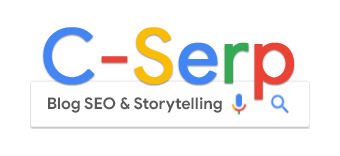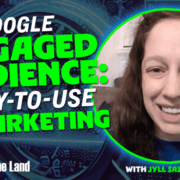Google Ads made simple: Leveraging engaged audiences

If you’ve been poking around Audience Manager in Google Ads lately, you may have noticed a new Your data segment that looks like this: “Google-engaged audiences – for Account #######”
What is that? And what should you do with it?
Welcome to the wonderful new world of Google-engaged audiences, a new type of remarketing that you should absolutely be paying attention to.
This article will cover:
- What is a Google-engaged audience?
- What’s so great about your Google-engaged audience?
- What are the limitations of Google-engaged audiences?
- Google-engaged audiences are perfect for small business owners
What is a Google-engaged audience?
A Google-engaged audience is a segment of users who have interacted with your website across Google’s owned platforms – organic and paid.
Every Google Ads account automatically gets one Google-engaged audience, and you can find it in Audience Manager under Your data segments.
For example:
- If someone searches for your company name on Google and clicks on your organic search result, they’re automatically added to your engaged audience in Google Ads.
- If someone clicks on your website link from your Google Business Profile? Automatically added.
- If someone clicks on any of your Google Ads on Google platforms (Search, Shopping, Discovery, Gmail, Maps, etc.), they’re automatically added to this audience as well.
What’s so great about your Google-engaged audience?
There are a few reasons why these engaged audiences are particularly useful:
- Effortless setup: Forget about complicated tagging or linking accounts. The Google-engaged audience is automatically created and populated. It’s the easiest way to start reaching people who have already visited your website from Google properties. Remarketing on easy mode.
- Simplicity: With Google-engaged audiences, you don’t need to get bogged down in details like audience durations or segmentation rules. There’s just one audience to work with. You can choose to target this audience, exclude it from your campaigns, or even use it as a seed for creating lookalike audiences. It keeps things nice and clean.
- High-quality data: Because this audience is built from individuals who interacted with your brand on a Google-owned platform before visiting your site, Google has a strong understanding of who these users are (because they are often signed into their Google accounts). This means the data is generally more reliable and complete vs. relying on website tags, which can be affected by privacy regulations, cookies, and consent management.
What are the limitations of Google-engaged audiences?
The simplicity of engaged audiences also means there are some limitations. Because every Google Ads account only gets one audience, you don’t have the option to create more granular segments based on specific actions users took.
Additionally, this audience only includes people who arrived at your website from Google properties. It won’t capture direct traffic, visitors from social media, referral traffic, etc.
Google-engaged audiences are perfect for small business owners
Despite these limitations, if you’re a small business owner (or you work with small business owners) I strongly recommend experimenting with Google-engaged audiences in your Google Ads campaigns. It’s a low-effort way to start remarketing to people who have already shown interest in your brand through Google, and the data quality is a significant advantage.
Remember to also check your Audience insights for this segment. You might learn something new!
This article is part of our ongoing weekly Search Engine Land series, Everything you need to know about Google Ads in less than 3 minutes. Every Wednesday, Jyll highlights a different Google Ads feature, and what you need to know to get the best results from it – all in a quick 3-minute read.


